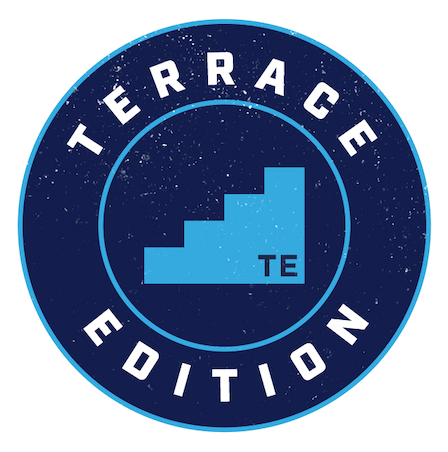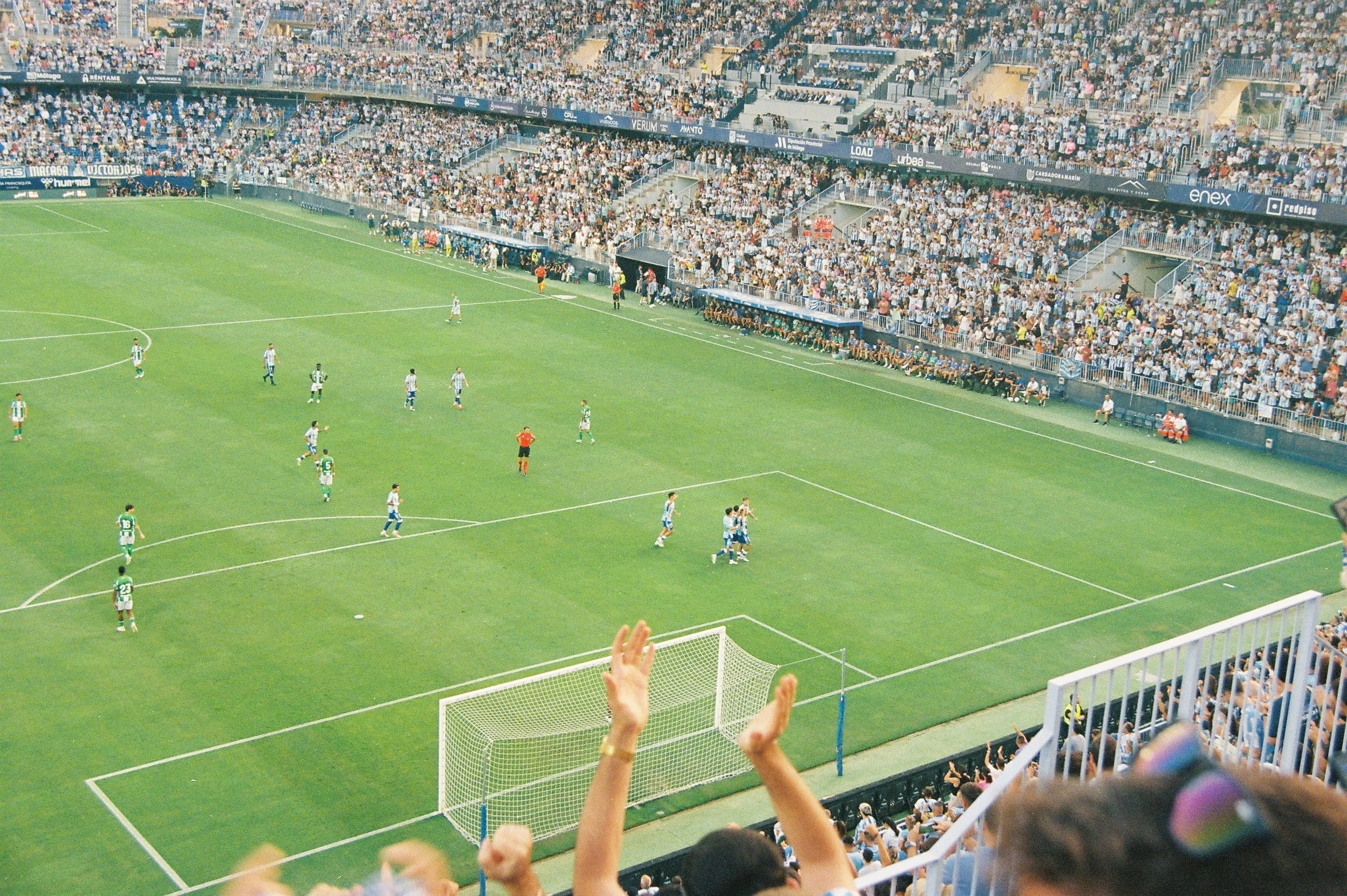Juventud Torremolinos

Words: Roy Piepers
Images: Roy Piepers
While sunseekers may flock to Torremolinos for its beaches and nightlife, few realise that its football club, Juventud Torremolinos, has played an important role in the town’s transformation from a modest fishing and milling village into a thriving tourism hotspot.
Torremolinos means ‘Tower of the Mills’ — a nod to its industrial roots, which faded in the 1920s as tourism took hold.
The famous beach resort rose to international prominence in the 1960s, when it became a mass tourism destination, but it had already been discovered by celebrities like Grace Kelly and Marlon Brando, and was even visited by Frank Sinatra.
Although Pablo Picasso was born just a stone’s throw away in Malaga, it was Salvador Dali who honeymooned there in the 1930s, something the town proudly marks with several sculptures along the promenade.
This cultural buzz, combined with a growing population and rising prosperity, created fertile ground for another local passion — football.
©Roy Piepers/ Terrace Edition. Juventud de Torremolinos CF.
Amid rapid urban growth and a swelling local population, the town’s first football team was founded in 1932, playing on the site of today’s Estadio Municipal El Pozuelo.
Over the decades, several different teams have played at the ground. The Spanish civil war cut short the first team’s existence after only a few years, and the post-war period, a new side emerged: Club Deportivo Torremolinos.
This team became infamous for a pitch invasion after the home supporters didn’t agree with a referee’s decision in 1946.
As the referee came under attack, a local police officer fired his gun into the air to disperse the crowd. The incident resulted in the closure of the pitch until 1950.
In 1958, C.D. Torremolinos and Juvenil de Torremolinos C.F. merged and became Juventud de Torremolinos C.F., playing in a green shirt and white shorts, the colours mirroring those of the Andalusian flag.
©Roy Piepers/ Terrace Edition. Juventud de Torremolinos CF.
The original club crest featured the club colours, a tower, a mill and a football, but was later changed to a more modern interpretation, including the name of the club and the year it was founded.
In the 1960s, the influx of workers and residents filled not only hotel rooms but also the terraces at El Pozuelo.
Football gave the growing community a local identity and something to rally behind.
Juventud were promoted to the Tercera Division. They stayed for four seasons before relegation. Between 1980 and 2002 the “Verdiblancos” played in La Tercera again, but then entered a quieter period with limited success.
The most memorable match in recent history is undoubtedly their home cup tie against Sevilla FC in 2022.
©Roy Piepers/ Terrace Edition. Juventud de Torremolinos CF.
After beating Segunda División team SD Huesca in the first round, the cup draw against a fellow Andalusian team, who would go on to lift their seventh Europa League trophy that season, was met with joy.
A temporary stand was added to the ground and it was filled with 3,000 supporters. The inevitable 3 – 0 loss didn’t matter.
The energy in the stadium reflected the town’s pride — and the power of football to bring locals and visitors together in celebration, regardless of the result.
That historic cup tie was followed by a resurgence in the club’s fortunes. Juventud are enjoying a very successful spell and played in the fourth tier of Spanish football, RFEF 2, or Segunda Federación, in season 24/25, largely thanks to their current manager, Antonio Calderón.
He was a player for Spanish teams such as Rayo Vallecano and Mallorca in the 90s, and went on to play in Scotland, ending his career as player-coach at Raith Rovers.
©Roy Piepers/ Terrace Edition. Juventud de Torremolinos CF.
He has been coaching clubs in the lower echelons of the Spanish pyramid, but was assistant coach and caretaker of the Belgian side KMSK Deinze, before taking over “Los Verdes” in 2023 and guiding them to promotion from Tercera Federacion to Segunda Federación immediately.
This season has been another remarkable success. After 11 games, Juventud had 13 points — with only two wins, two losses, and seven draws.
At that stage, mid-table survival seemed a reasonable goal. But then the tide turned. Win followed win, and soon the club topped the table.
With five games remaining, their title rivals FC La Unión Atlético came to El Pozuelo for what was billed as the match of the season. A 2–0 defeat cost Juventud the lead, and a subsequent loss to CA Antoniano appeared to shatter any hopes of automatic promotion.
Most supporters had turned their attention to the play-offs. But then, two games before the end of the season, La Unión unexpectedly lost. Juventud kept their hopes alive with a solid win, and on the final day, everything fell into place.
©Roy Piepers/ Terrace Edition. Juventud de Torremolinos CF.
While La Unión were beaten by RB Linense — a team desperate to avoid relegation — Juventud cruised to a 5–0 victory. Promotion was theirs. The celebrations at El Pozuelo were as wild as you’d expect, bringing a dramatic season to a perfect close.
That moment of triumph brought renewed attention to El Pozuelo — the club’s home ground and a key part of its identity, nestled on the edge of town beside one of its more unusual tourist attractions.
The ground is right next to a Crocodile Park, containing 200 different species of these reptiles, and in front of the sports complex Palacio San Miguel, which looms above the main stand, its name clearly visible from the terraces.
Their matches are mainly attended by local supporters, including a group of passionate Argentinians, who are cheering on their team for the full 90 minutes, joined by some curious tourists and groundhoppers.
The lively matchday atmosphere is becoming part of the town’s cultural offering, drawing the interest of football-loving visitors.
©Roy Piepers/ Terrace Edition. Juventud de Torremolinos CF.
Tourism and football continue to support each other in quieter ways. Local hotels and restaurants sponsor the club, recognising its visibility among residents and visitors alike.
These partnerships not only provide financial backing but also reinforce the club’s role as an authentic extension of the town’s community life.
As someone who regularly visits both the town and the club, it’s heartening to see football thriving alongside Torremolinos’ bustling tourism trade.
With 70,000 residents and countless tourists passing through, Juventud Torremolinos is more than just a team — it’s a symbol of local pride in a town that welcomes the world.
And just as tourists continue to fill the beaches and promenades, football fans gather under the sun at El Pozuelo in increasing numbers.
©Roy Piepers/ Terrace Edition. Juventud de Torremolinos CF.
©Roy Piepers/ Terrace Edition. Juventud de Torremolinos CF.
©Roy Piepers/ Terrace Edition. Juventud de Torremolinos CF.
©Roy Piepers/ Terrace Edition. Juventud de Torremolinos CF.
©Roy Piepers/ Terrace Edition. Juventud de Torremolinos CF.
©Roy Piepers/ Terrace Edition. Juventud de Torremolinos CF.
©Roy Piepers/ Terrace Edition. Juventud de Torremolinos CF.
©Roy Piepers/ Terrace Edition. Juventud de Torremolinos CF.
Roy is on X: @roylovesfooty and Instagram: roypiepers2021
Juvented de Torremolinos’ website is www.jtorremolinoscf.com/en/



















